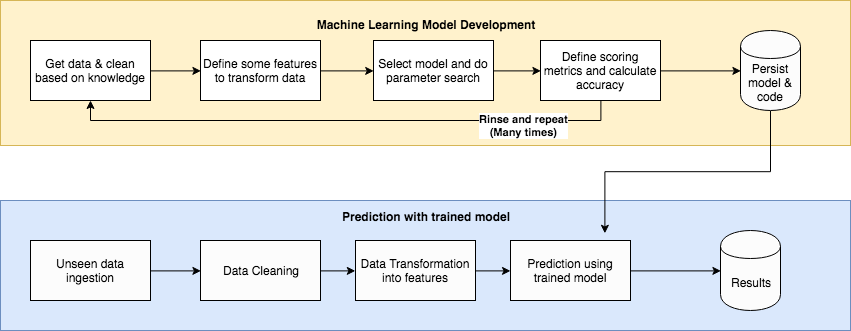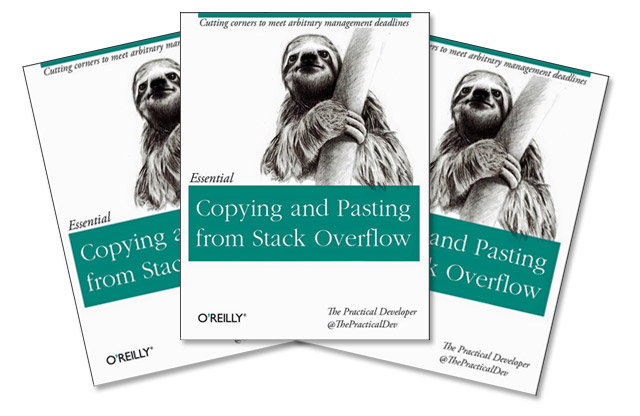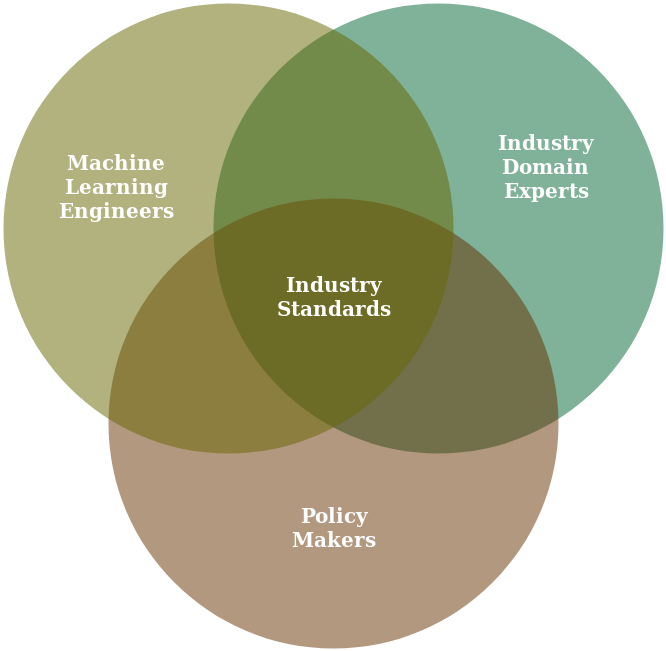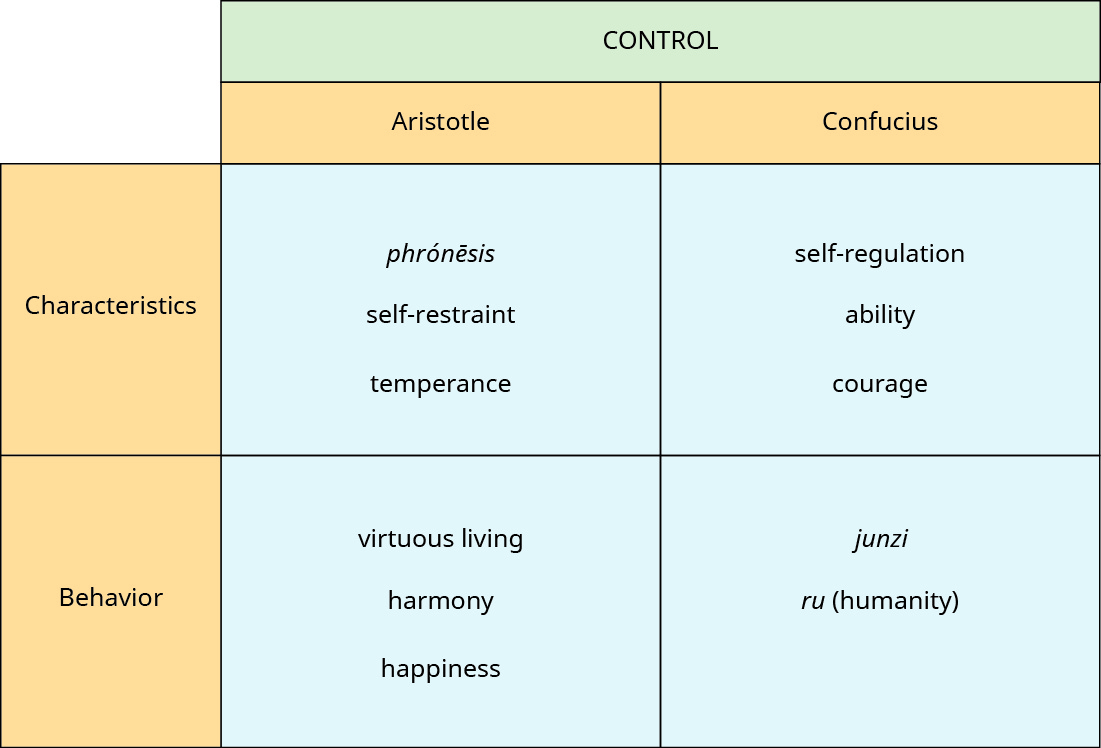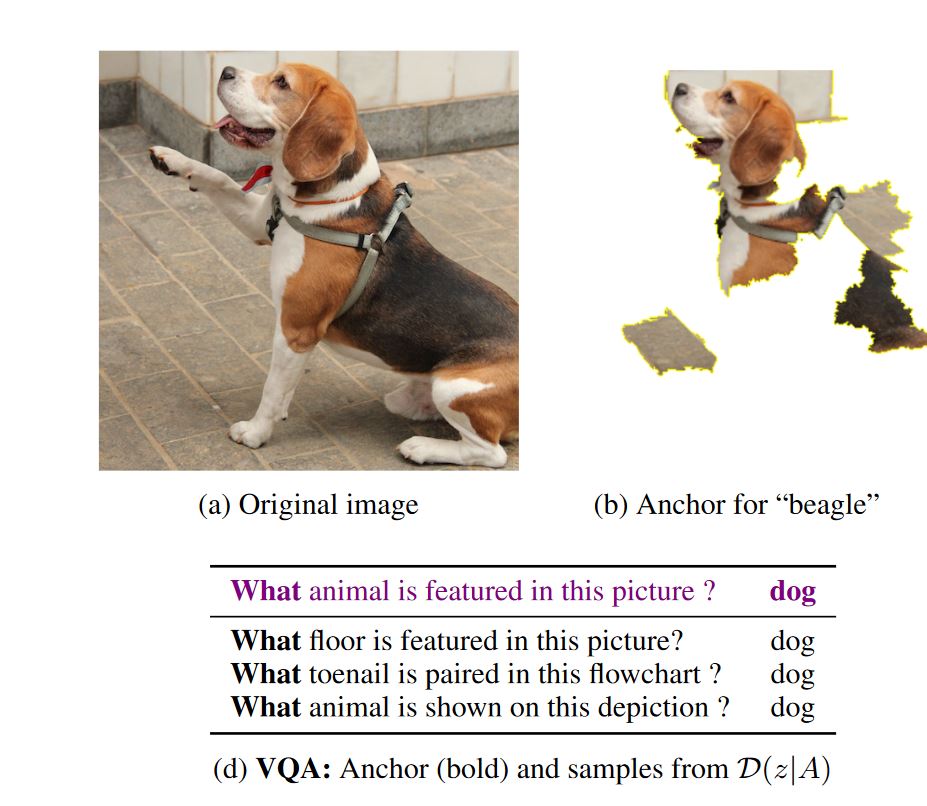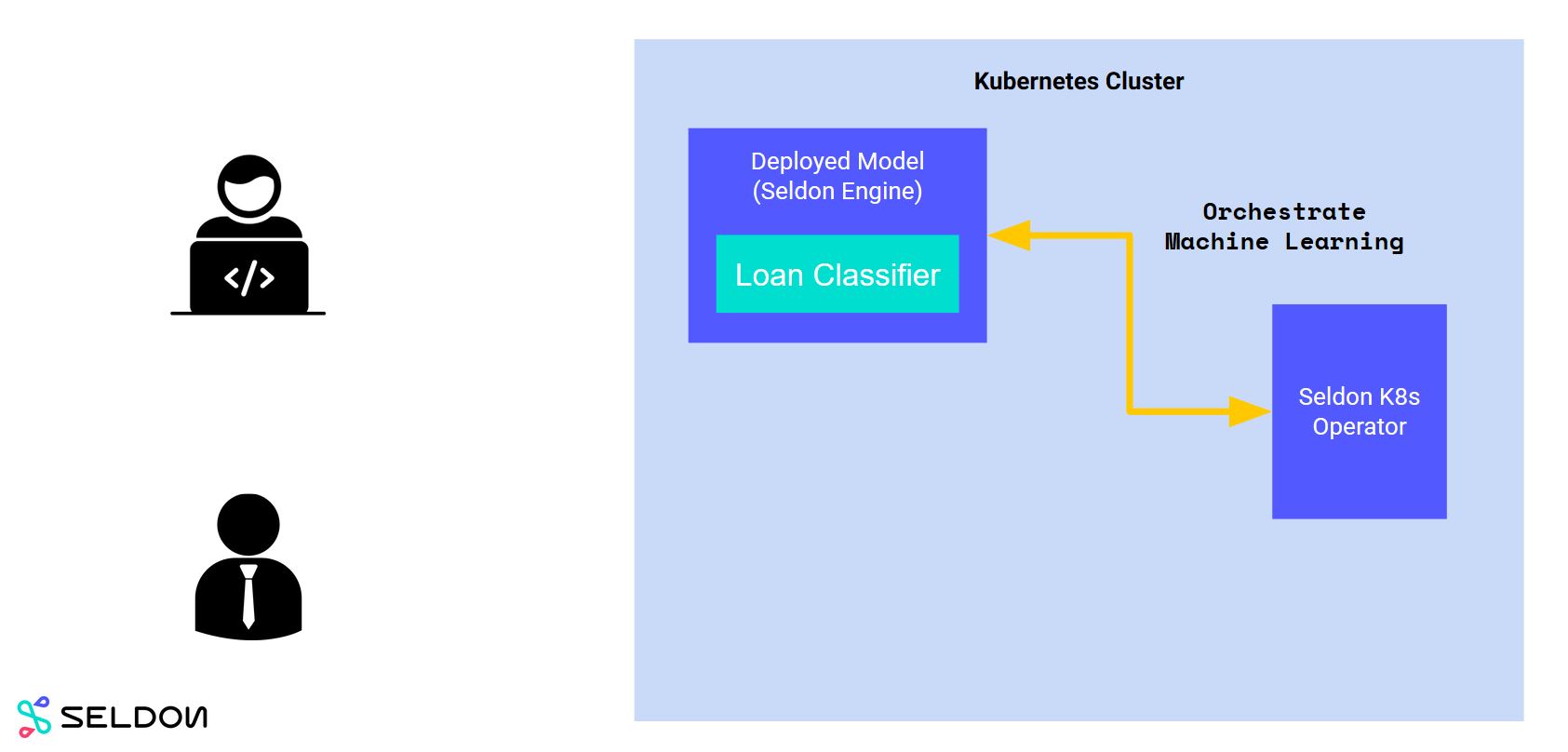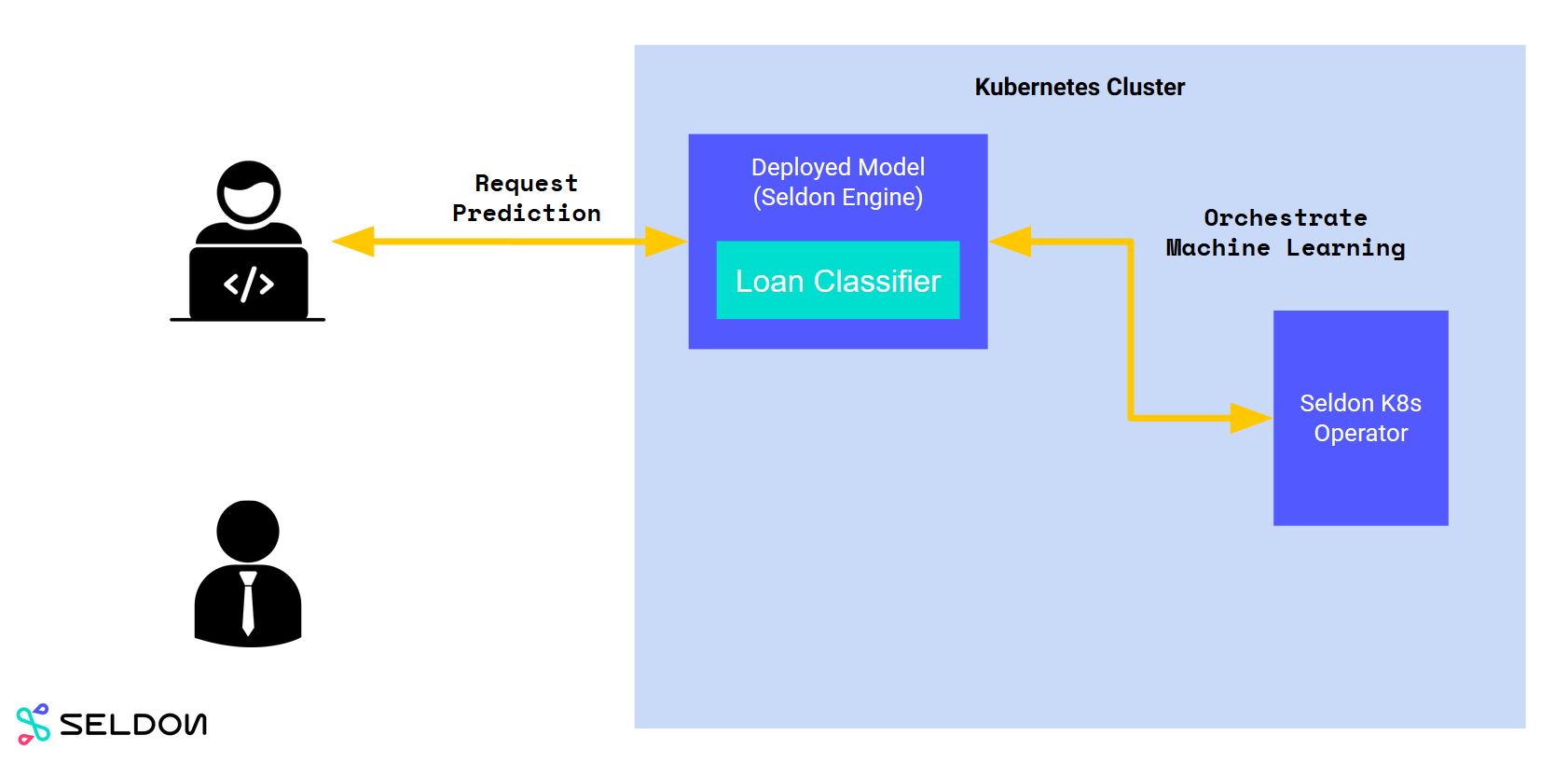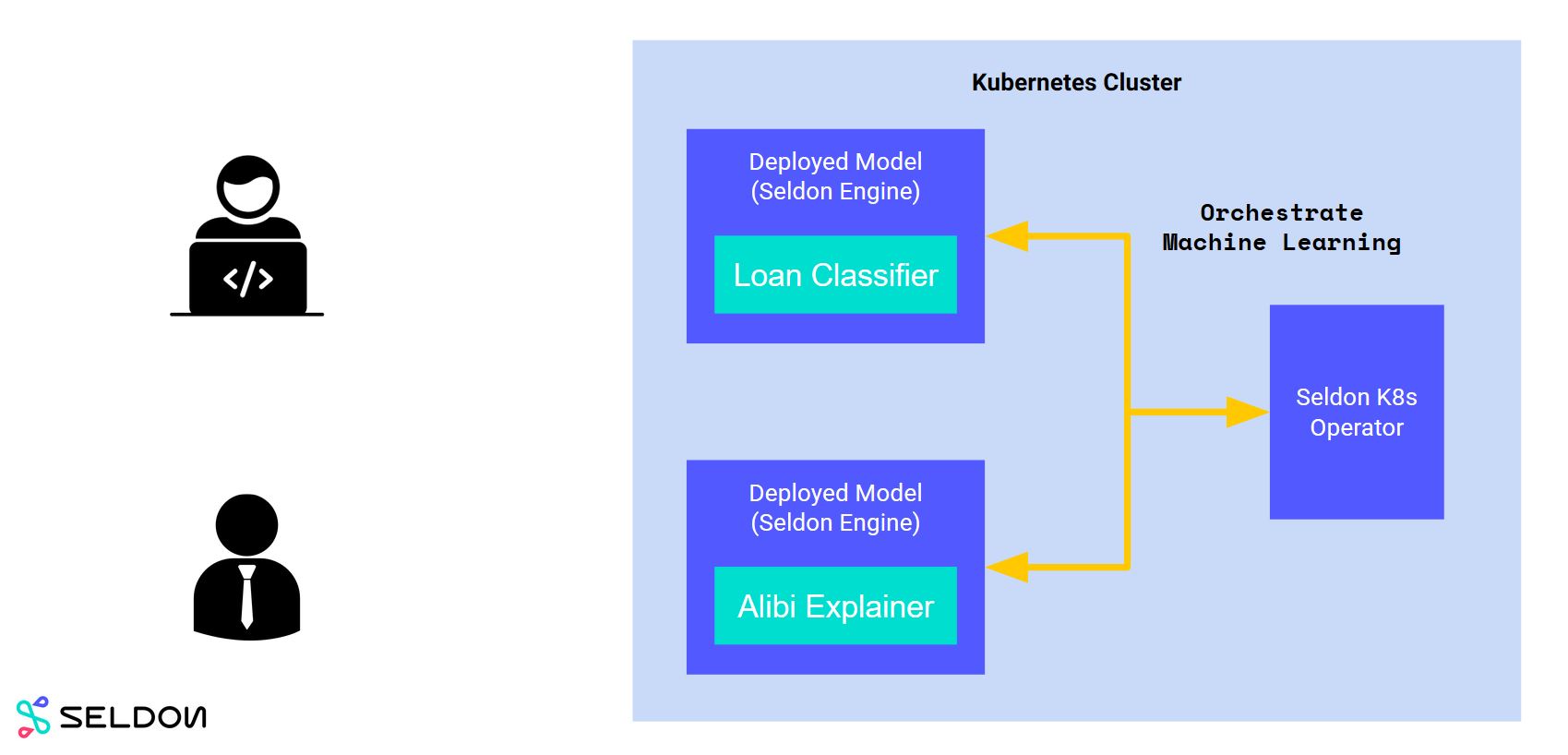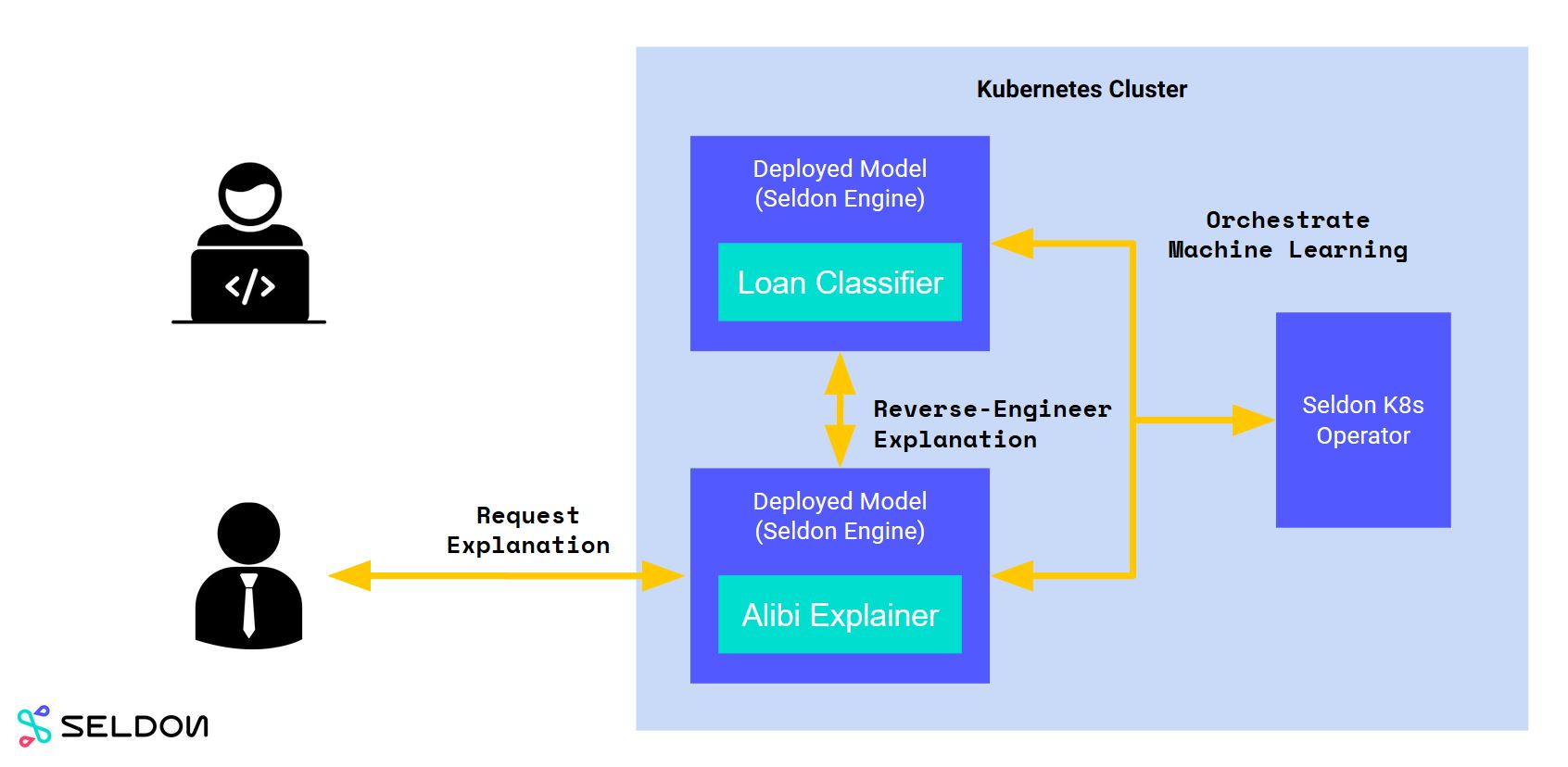In [ ]:
import numpy as np
import sklearn
from sklearn.model_selection import train_test_split
from sklearn.metrics import classification_report, mean_squared_error, roc_curve, auc
import seaborn as sn
import matplotlib.pyplot as plt
import pandas as pd
import shap
from keras.layers import Input, Dense, Flatten, \
Concatenate, concatenate, Dropout, Lambda
from keras.models import Model, Sequential
from keras.layers.embeddings import Embedding
import keras
from livelossplot import PlotLossesKeras
import eli5
from eli5.sklearn import PermutationImportance
import scipy
from scipy.cluster import hierarchy as hc
from lime.lime_tabular import LimeTabularExplainer
import math
import xai
import alibi
params = {
"ytick.color" : "w",
"xtick.color" : "w",
"text.color": "white",
'figure.facecolor': "#384151",
'legend.facecolor': "#384151",
"axes.labelcolor" : "w",
"axes.edgecolor" : "w",
'font.size': '20.0',
'figure.figsize': [20, 7],
}
plt.rcParams.update(params)
shap.initjs()
label_column = "loan"
csv_path = 'data/adult.data'
csv_columns = ["age", "workclass", "fnlwgt", "education", "education-num", "marital-status",
"occupation", "relationship", "ethnicity", "gender", "capital-gain", "capital-loss",
"hours-per-week", "native-country", "loan"]
input_columns = ["age", "workclass", "education", "education-num", "marital-status",
"occupation", "relationship", "ethnicity", "gender", "capital-gain", "capital-loss",
"hours-per-week", "native-country"]
categorical_features = ["workclass", "education", "marital-status",
"occupation", "relationship", "ethnicity", "gender",
"native-country"]
def prepare_data(df):
if "fnlwgt" in df: del df["fnlwgt"]
tmp_df = df.copy()
# normalize data (this is important for model convergence)
dtypes = list(zip(tmp_df.dtypes.index, map(str, tmp_df.dtypes)))
for k,dtype in dtypes:
if dtype == "int64":
tmp_df[k] = tmp_df[k].astype(np.float32)
tmp_df[k] -= tmp_df[k].mean()
tmp_df[k] /= tmp_df[k].std()
cat_columns = tmp_df.select_dtypes(['object']).columns
tmp_df[cat_columns] = tmp_df[cat_columns].astype('category')
tmp_df[cat_columns] = tmp_df[cat_columns].apply(lambda x: x.cat.codes)
tmp_df[cat_columns] = tmp_df[cat_columns].astype('int8')
return tmp_df
def get_dataset_1():
tmp_df = df.copy()
tmp_df = tmp_df.groupby('loan') \
.apply(lambda x: x.sample(100) if x["loan"].iloc[0] else x.sample(7_900)) \
.reset_index(drop=True)
X = tmp_df.drop(label_column, axis=1).copy()
y = tmp_df[label_column].astype(int).values.copy()
return tmp_df, df_display.copy()
def get_production_dataset():
tmp_df = df.copy()
tmp_df = tmp_df.groupby('loan') \
.apply(lambda x: x.sample(50) if x["loan"].iloc[0] else x.sample(60)) \
.reset_index(drop=True)
X = tmp_df.drop(label_column, axis=1).copy()
y = tmp_df[label_column].astype(int).values.copy()
return X, y
def get_dataset_2():
tmp_df = df.copy()
tmp_df_display = df_display.copy()
# tmp_df_display[label_column] = tmp_df_display[label_column].astype(int).values
X = tmp_df.drop(label_column, axis=1).copy()
y = tmp_df[label_column].astype(int).values.copy()
X_display = tmp_df_display.drop(label_column, axis=1).copy()
y_display = tmp_df_display[label_column].astype(int).values.copy()
X_train, X_valid, y_train, y_valid = \
train_test_split(X, y, test_size=0.2, random_state=7)
return X, y, X_train, X_valid, y_train, y_valid, X_display, y_display, tmp_df, tmp_df_display
df_display = pd.read_csv(csv_path, names=csv_columns)
df_display[label_column] = df_display[label_column].apply(lambda x: ">50K" in x)
df = prepare_data(df_display)
def build_model(X):
input_els = []
encoded_els = []
dtypes = list(zip(X.dtypes.index, map(str, X.dtypes)))
for k,dtype in dtypes:
input_els.append(Input(shape=(1,)))
if dtype == "int8":
e = Flatten()(Embedding(df[k].max()+1, 1)(input_els[-1]))
else:
e = input_els[-1]
encoded_els.append(e)
encoded_els = concatenate(encoded_els)
layer1 = Dropout(0.5)(Dense(100, activation="relu")(encoded_els))
out = Dense(1, activation='sigmoid')(layer1)
# train model
model = Model(inputs=input_els, outputs=[out])
model.compile(optimizer="adam", loss='binary_crossentropy', metrics=['accuracy'])
return model
def f_in(X, m=None):
"""Preprocess input so it can be provided to a function"""
if m:
return [X.iloc[:m,i] for i in range(X.shape[1])]
else:
return [X.iloc[:,i] for i in range(X.shape[1])]
def f_out(probs):
"""Convert probabilities into classes"""
return list((probs >= 0.5).astype(int).T[0])
def plot_roc(y, probs):
fpr, tpr, _ = roc_curve(y, probs)
roc_auc = auc(fpr, tpr)
print(roc_auc)
plt.figure()
plt.plot(fpr, tpr, label='ROC curve (area = %0.2f)' % roc_auc)
plt.plot([0, 1], [0, 1], 'k--')
plt.xlim([0.0, 1.0])
plt.ylim([0.0, 1.05])
plt.xlabel('False Positive Rate')
plt.ylabel('True Positive Rate')
plt.title('ROC curve (area = %0.2f)' % roc_auc)
plt.legend(loc="lower right")
plt.rcParams.update(params)
plt.show()
def plot_learning_curves(model, X, y):
X_train, X_val, y_train, y_val = train_test_split(X, y, test_size=0.2)
train_errors, val_errors = [], []
for m in list(np.logspace(0.6,4,dtype='int')):
if m >= len(X_train): break
model.fit(f_in(X_train,m), y_train[:m], epochs=50, batch_size=512, verbose=0)
y_train_predict = model.predict(f_in(X_train,m))
y_val_predict = model.predict(f_in(X_val))
y_train_predict = f_out(y_train_predict)
y_val_predict = f_out(y_val_predict)
train_errors.append(mean_squared_error(y_train[:m], y_train_predict))
val_errors.append(mean_squared_error(y_val, y_val_predict))
plt.plot(np.sqrt(train_errors), "r-+", linewidth=2, label="train")
plt.plot(np.sqrt(val_errors), "b-", linewidth=3, label="val")
def keras_score(self, X, y, **kwargs):
""" Scorer class for eli5 library on feature importance"""
input_test = [X[:,i] for i in range(X.shape[1])]
loss = self.evaluate(input_test, y)
if type(loss) is list:
# The first one is the error, the rest are metrics
return -loss[0]
return -loss
class ModelWrapper():
""" Keras model wrapper to override the predict function"""
def __init__(self, model):
self.model = model
def predict(self, X, **kwargs):
return self.model.predict([X.iloc[:,i] for i in range(X.shape[1])])
def plot_all_features(X, plot_numeric=True, hist=True, dropna=False):
fig = plt.figure(figsize=(20,15))
cols = 5
rows = math.ceil(float(X.shape[1]) / cols)
for i, column in enumerate(X.columns):
ax = fig.add_subplot(rows, cols, i + 1)
ax.set_title(column)
if X.dtypes[column] == np.object:
X[column].value_counts().plot(kind="bar", axes=ax)
elif plot_numeric:
if hist:
X[column].hist(axes=ax)
plt.xticks(rotation="vertical")
else:
if dropna:
X[column].dropna().plot()
else:
X[column].plot()
plt.subplots_adjust(hspace=0.7, wspace=0.2)
def plot_dendogram(corr, X):
corr_condensed = hc.distance.squareform(1-corr)
z = hc.linkage(corr_condensed, method="average")
fig = plt.figure(figsize=(16,5))
dendrogram = hc.dendrogram(
z, labels=X.columns, orientation="left", leaf_font_size=16)
plt.show()
def shap_predict(X):
values = model.predict([X[:,i] for i in range(X.shape[1])]).flatten()
return values
def lime_predict_proba(X):
values = model.predict([X[:,i] for i in range(X.shape[1])]).flatten()
prob_pairs = np.array([1-values, values]).T
return prob_pairs
import alibi
import numpy as np
from sklearn.preprocessing import LabelEncoder, StandardScaler, OneHotEncoder
from sklearn.impute import SimpleImputer
from sklearn.pipeline import Pipeline
from sklearn.compose import ColumnTransformer
from sklearn.ensemble import RandomForestClassifier
alibi_data, alibi_labels, alibi_feature_names, alibi_category_map = alibi.datasets.adult()
def get_alibi_data():
# define train and test set
np.random.seed(0)
data_perm = np.random.permutation(np.c_[alibi_data, alibi_labels])
data = data_perm[:, :-1]
labels = data_perm[:, -1]
idx = 30000
X_train, y_train = data[:idx, :], labels[:idx]
X_test, y_test = data[idx + 1:, :], labels[idx + 1:]
# feature transformation pipeline
ordinal_features = [x for x in range(len(alibi_feature_names)) if x not in list(alibi_category_map.keys())]
ordinal_transformer = Pipeline(steps=[('imputer', SimpleImputer(strategy='median')),
('scaler', StandardScaler())])
categorical_features = list(alibi_category_map.keys())
categorical_transformer = Pipeline(steps=[('imputer', SimpleImputer(strategy='median')),
('onehot', OneHotEncoder(handle_unknown='ignore'))])
preprocessor = ColumnTransformer(transformers=[('num', ordinal_transformer, ordinal_features),
('cat', categorical_transformer, categorical_features)])
np.random.seed(0)
clf = RandomForestClassifier(n_estimators=50)
alibi_loan_model = Pipeline(steps=[
('preprocessor', preprocessor),
('clf', clf)])
alibi_loan_model.fit(X_train, y_train)
return X_train, X_test, y_train, y_test, \
alibi_category_map, alibi_feature_names, alibi_loan_model
X_train_alibi, X_test_alibi, y_train_alibi, y_test_alibi, \
category_map_alibi, feature_names_alibi, loan_model_alibi = get_alibi_data()
import tensorflow as tf
tf.logging.set_verbosity(tf.logging.ERROR) # suppress deprecation messages
from tensorflow.keras.models import load_model
from tensorflow.keras.utils import to_categorical
from alibi.explainers import CounterFactual
# def cnn_model():
# from tensorflow.keras import backend as K
# from tensorflow.keras.layers import Conv2D, Dense, Dropout, Flatten, MaxPooling2D, Input, UpSampling2D
# from tensorflow.keras.models import Model
# x_in = Input(shape=(28, 28, 1))
# x = Conv2D(filters=64, kernel_size=2, padding='same', activation='relu')(x_in)
# x = MaxPooling2D(pool_size=2)(x)
# x = Dropout(0.3)(x)
# x = Conv2D(filters=32, kernel_size=2, padding='same', activation='relu')(x)
# x = MaxPooling2D(pool_size=2)(x)
# x = Dropout(0.3)(x)
# x = Flatten()(x)
# x = Dense(256, activation='relu')(x)
# x = Dropout(0.5)(x)
# x_out = Dense(10, activation='softmax')(x)
# cnn = Model(inputs=x_in, outputs=x_out)
# cnn.compile(loss='categorical_crossentropy', optimizer='adam', metrics=['accuracy'])
# return cnn
# cnn = cnn_model()
# cnn.summary()
# cnn.fit(x_train, y_train, batch_size=64, epochs=3, verbose=0)
# cnn.save('mnist_cnn.h5')
def show_iterations(explanation, max_lam_steps=10):
n_cfs = np.array([len(explanation['all'][iter_cf]) for iter_cf in range(max_lam_steps)])
examples = {}
for ix, n in enumerate(n_cfs):
if n>0:
examples[ix] = {'ix': ix, 'lambda': explanation['all'][ix][0]['lambda'],
'X': explanation['all'][ix][0]['X']}
columns = len(examples) + 1
rows = 1
fig = plt.figure(figsize=(16,6))
for i, key in enumerate(examples.keys()):
ax = plt.subplot(rows, columns, i+1)
ax.get_xaxis().set_visible(False)
ax.get_yaxis().set_visible(False)
plt.imshow(examples[key]['X'].reshape(28,28))
plt.title(f'Iter {key}')
(cf_x_train, cf_y_train), (cf_x_test, cf_y_test) = tf.keras.datasets.mnist.load_data()
print('x_train shape:', cf_x_train.shape, 'y_train shape:', cf_y_train.shape)
plt.gray()
cf_x_train = cf_x_train.astype('float32') / 255
cf_x_test = cf_x_test.astype('float32') / 255
cf_x_train = np.reshape(cf_x_train, cf_x_train.shape + (1,))
cf_x_test = np.reshape(cf_x_test, cf_x_test.shape + (1,))
cf_y_train = to_categorical(cf_y_train)
cf_y_test = to_categorical(cf_y_test)
cf_xmin, cf_xmax = -.5, .5
cf_x_train = ((cf_x_train - cf_x_train.min()) / (cf_x_train.max() - cf_x_train.min())) * (cf_xmax - cf_xmin) + cf_xmin
cf_x_test = ((cf_x_test - cf_x_test.min()) / (cf_x_test.max() - cf_x_test.min())) * (cf_xmax - cf_xmin) + cf_xmin
Hype-ML - A NEW Project has come in!¶
- Insurance company has a process where domain expert approves/rejects loan applications
- They receive over 1m applications and want to automate the process
Business wants it NOW!¶
- They heard their competitor is using "Machine Learning" and business says we need to use that
In [160]:
df_data, df_display = get_dataset_1()
df_display.head()
Out[160]:
| age | workclass | education | education-num | marital-status | occupation | relationship | ethnicity | gender | capital-gain | capital-loss | hours-per-week | native-country | loan | |
|---|---|---|---|---|---|---|---|---|---|---|---|---|---|---|
| 0 | 39 | State-gov | Bachelors | 13 | Never-married | Adm-clerical | Not-in-family | White | Male | 2174 | 0 | 40 | United-States | False |
| 1 | 50 | Self-emp-not-inc | Bachelors | 13 | Married-civ-spouse | Exec-managerial | Husband | White | Male | 0 | 0 | 13 | United-States | False |
| 2 | 38 | Private | HS-grad | 9 | Divorced | Handlers-cleaners | Not-in-family | White | Male | 0 | 0 | 40 | United-States | False |
| 3 | 53 | Private | 11th | 7 | Married-civ-spouse | Handlers-cleaners | Husband | Black | Male | 0 | 0 | 40 | United-States | False |
| 4 | 28 | Private | Bachelors | 13 | Married-civ-spouse | Prof-specialty | Wife | Black | Female | 0 | 0 | 40 | Cuba | False |
In [161]:
X = df_data.drop(label_column, axis=1).copy()
y = df_data[label_column].astype(int).values.copy()
X_train, X_valid, y_train, y_valid = \
train_test_split(X, y, test_size=0.2, random_state=7)
print("Training size:", y_train.shape, "Testing size: ", y_valid.shape)
Training size: (6400,) Testing size: (1600,)

In [162]:
# 1 layer, 100 neurons model, with softmax (0-1 probabilities)
model = build_model(X)
model.fit(f_in(X_train), y_train, epochs=10,
batch_size=512, shuffle=True, validation_data=(f_in(X_valid), y_valid),
callbacks=[PlotLossesKeras()], verbose=0, validation_split=0.05,)
Log-loss (cost function): training (min: 0.068, max: 0.553, cur: 0.068) validation (min: 0.062, max: 0.466, cur: 0.062) Accuracy: training (min: 0.888, max: 0.988, cur: 0.988) validation (min: 0.987, max: 0.987, cur: 0.987)
Out[162]:
<keras.callbacks.History at 0x7fae564f3898>
In [163]:
score = model.evaluate(f_in(X_valid), y_valid, verbose=1)
print("Error %.4f: " % score[0])
print("Accuracy %.4f: " % (score[1]*100))
1600/1600 [==============================] - 0s 47us/step Error 0.0623: Accuracy 98.6875:
In [164]:
X_prod, y_prod = get_production_dataset()
print(X_prod.shape)
X_prod.head()
(110, 13)
Out[164]:
| age | workclass | education | education-num | marital-status | occupation | relationship | ethnicity | gender | capital-gain | capital-loss | hours-per-week | native-country | |
|---|---|---|---|---|---|---|---|---|---|---|---|---|---|
| 0 | 0.177293 | 4 | 15 | -0.031359 | 2 | 1 | 0 | 4 | 1 | 0.237140 | -0.216656 | -0.035429 | 39 |
| 1 | -0.555822 | 4 | 9 | 1.134722 | 4 | 12 | 1 | 2 | 0 | -0.145918 | -0.216656 | 0.774456 | 39 |
| 2 | -1.142313 | 4 | 8 | 0.357334 | 4 | 3 | 4 | 2 | 0 | -0.145918 | -0.216656 | -0.035429 | 39 |
| 3 | 0.397227 | 4 | 12 | 1.523415 | 5 | 12 | 4 | 4 | 0 | -0.145918 | -0.216656 | 0.612479 | 39 |
| 4 | -1.069002 | 4 | 15 | -0.031359 | 4 | 13 | 1 | 4 | 0 | -0.145918 | -0.216656 | -1.979153 | 39 |
In [165]:
probabilities = model.predict(f_in(X_prod))
pred = f_out(probabilities)
_= xai.metrics_plot(pred, y_prod, exclude_metrics=["auc", "specificity", "f1"])
In [166]:
xai.confusion_matrix_plot(y_prod, pred)
In [167]:
fig, ax = plt.subplots(1,2)
a = sn.countplot(y_valid, ax=ax[0]); a.set_title("TRAINING DATA"); a.set_xticklabels(["Rejected", "Approved"])
a = sn.countplot(y_prod, ax=ax[1]); a.set_title("PRODUCTION"); a.set_xticklabels(["Rejected", "Approved"])
Out[167]:
[Text(0, 0, 'Rejected'), Text(0, 0, 'Approved')]
Undesired bias and explainability¶
Has become popular due to several high profile incidents:
- Amazon's "sexist" recruitment tool
- Microsoft's "racist" chatbot
- Negative discrimination in automated sentencing
- Black box models + complex patterns can't be interpretable
Organisations cannot take on unknown risks¶
Stages where bias can appear¶
1) Statistical bias (During the project)¶
Sub-optimal choices on decisions after project starts (models, metrics, human-in-the-loop, infrastructure design, etc)¶
2) A-priori bias (Before the project)¶
Limitations around the project that constrain the best possible outcome (limited time, budget, data, societal shifts in perception, etc)¶
Not as easy as just "removing bias"¶
- Any non trivial decision holds a bias, without exceptions - unless you build a classifier that only predicts "maybe".
- It's impossible to "just remove bias" (as the whole purpose of ML is to discriminate towards the right answer)
- Societal bias carries an inherent bias - what may be "racist" for one person, may not be for another group or geography
Emphasis on last point: Societal bias is inherently biased¶
What it's about: Mitigating undesired bias through process and explainability techniques¶
- Like in cybersecurity, it's impossible to build a system that will never be hacked
- But it's possible to build a system and introduce processes that ensure a reasonable level of security
- Similarly we want to introduce processes that allow us to remove a reasonable level of undesired biases
- This is going 0 to 1, trying to introduce a foundation for undesired bias
The explainability tradeoff¶
By making introducing processes that allow us to mitigate undesired bias and increase explainability, we face severall tradeoffs:
- More redtape introduced
- Potentially lower accuracy
- Constrains on models that can be used
- Increase in infrastructure complexity
- Requirement of domain expert knowledge intersection
The amount of explainability and process is proportionate to the impact of the project (prototype vs prod)¶
XAI - eXplainable AI¶
A set of tools to explain machine learning data¶
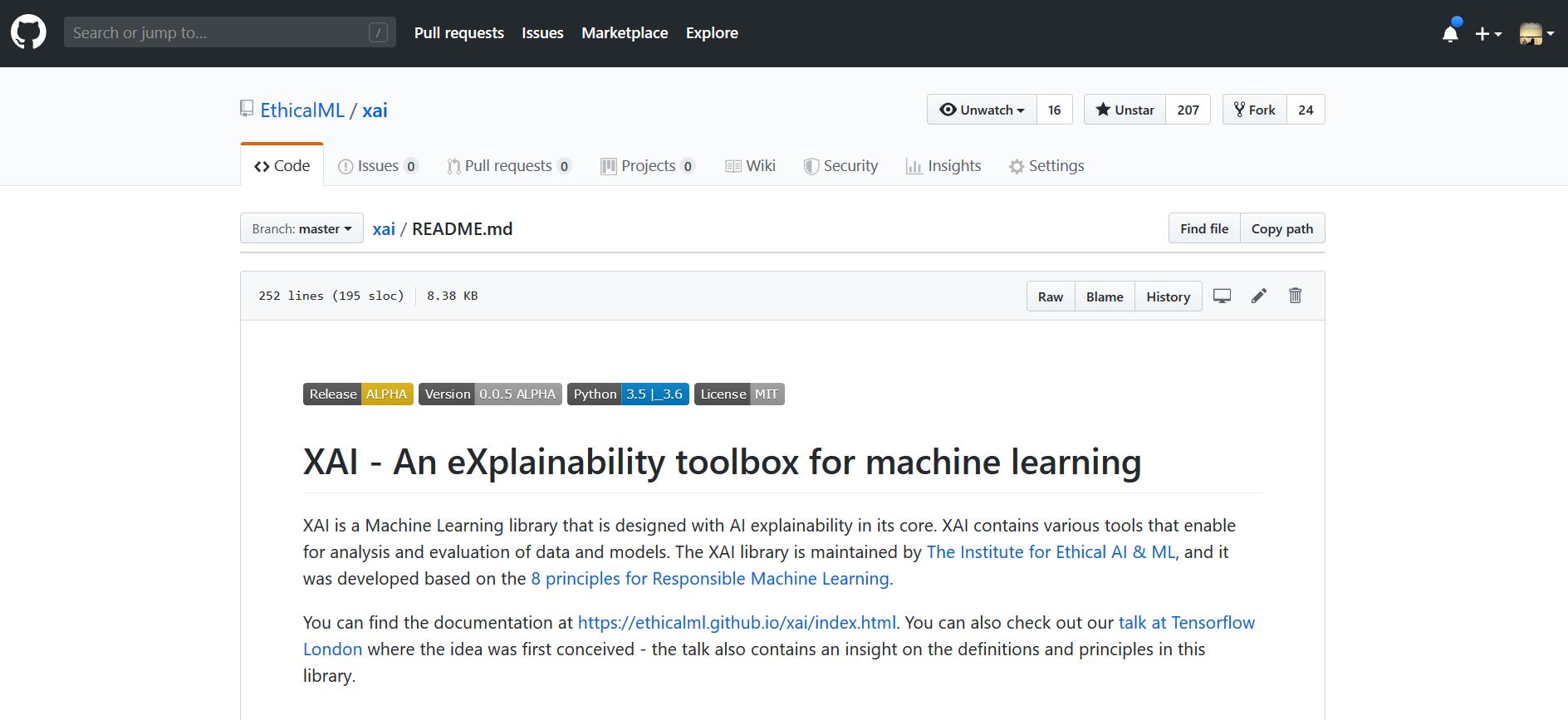
https://github.com/EthicalML/XAI¶
Let's get the new training dataset¶
In [168]:
X, y, X_train, X_valid, y_train, y_valid, X_display, y_display, df, df_display \
= get_dataset_2()
df_display.head()
Out[168]:
| age | workclass | education | education-num | marital-status | occupation | relationship | ethnicity | gender | capital-gain | capital-loss | hours-per-week | native-country | loan | |
|---|---|---|---|---|---|---|---|---|---|---|---|---|---|---|
| 0 | 39 | State-gov | Bachelors | 13 | Never-married | Adm-clerical | Not-in-family | White | Male | 2174 | 0 | 40 | United-States | False |
| 1 | 50 | Self-emp-not-inc | Bachelors | 13 | Married-civ-spouse | Exec-managerial | Husband | White | Male | 0 | 0 | 13 | United-States | False |
| 2 | 38 | Private | HS-grad | 9 | Divorced | Handlers-cleaners | Not-in-family | White | Male | 0 | 0 | 40 | United-States | False |
| 3 | 53 | Private | 11th | 7 | Married-civ-spouse | Handlers-cleaners | Husband | Black | Male | 0 | 0 | 40 | United-States | False |
| 4 | 28 | Private | Bachelors | 13 | Married-civ-spouse | Prof-specialty | Wife | Black | Female | 0 | 0 | 40 | Cuba | False |
In [169]:
im = xai.imbalance_plot(df_display, "gender", "loan" , categorical_cols=["loan", "gender"])
In [170]:
im = xai.balance(df_display, "gender", "loan", categorical_cols=["gender", "loan"],
upsample=0.5, downsample=0.8)
1.2) Balanced testing / validation datasets¶
In [171]:
X_train_balanced, y_train_balanced, X_valid_balanced, y_valid_balanced, train_idx, test_idx = \
xai.balanced_train_test_split(
X, y, "gender",
min_per_group=300,
max_per_group=300,
categorical_cols=["gender", "loan"])
X_valid_balanced["loan"] = y_valid_balanced
im = xai.imbalance_plot(X_valid_balanced, "gender", "loan", categorical_cols=["gender", "loan"])
In [172]:
corr = xai.correlations(df_display, include_categorical=True)
/home/alejandro/miniconda3/envs/reddit-classification/lib/python3.7/site-packages/scipy/stats/stats.py:248: RuntimeWarning: The input array could not be properly checked for nan values. nan values will be ignored. "values. nan values will be ignored.", RuntimeWarning)
1.5 Shoutout to other tools and techniques¶
Alibi - Black Box Model Explanations¶
A set of proven scientific techniques to explain ML models as black boxes¶
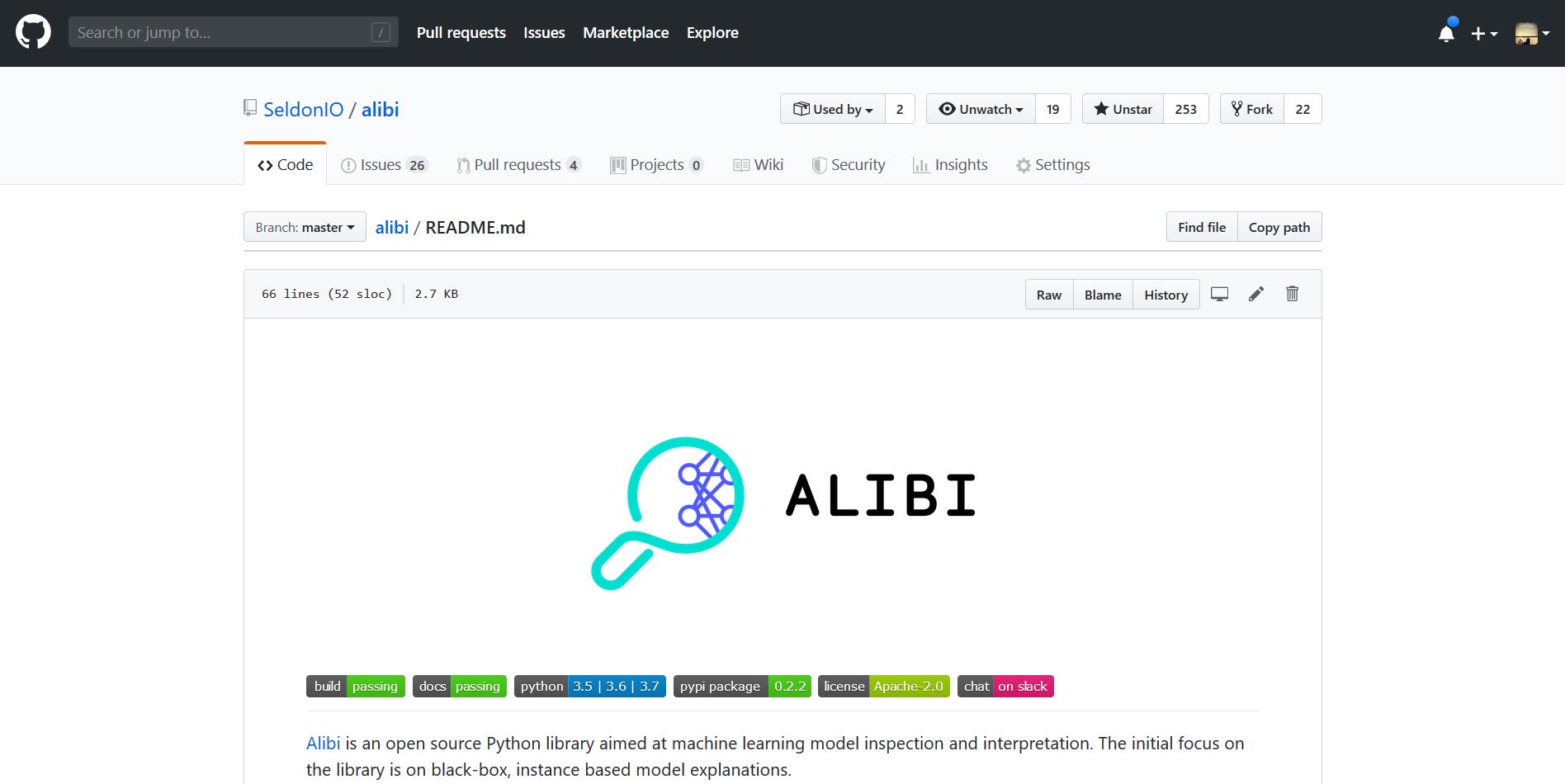
https://github.com/SeldonIO/Alibi¶
Model Evaluation Metrics: White / Black Box¶
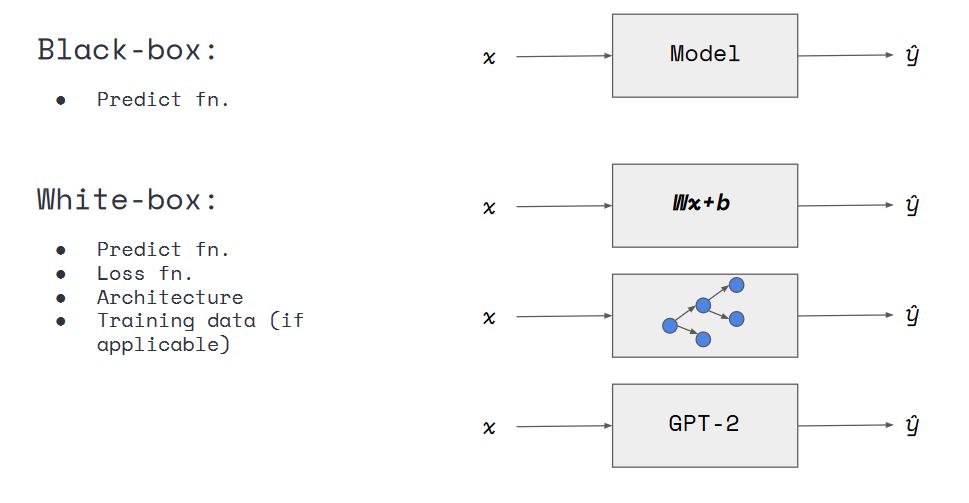
Model Evaluation Metrics: Global vs Local¶
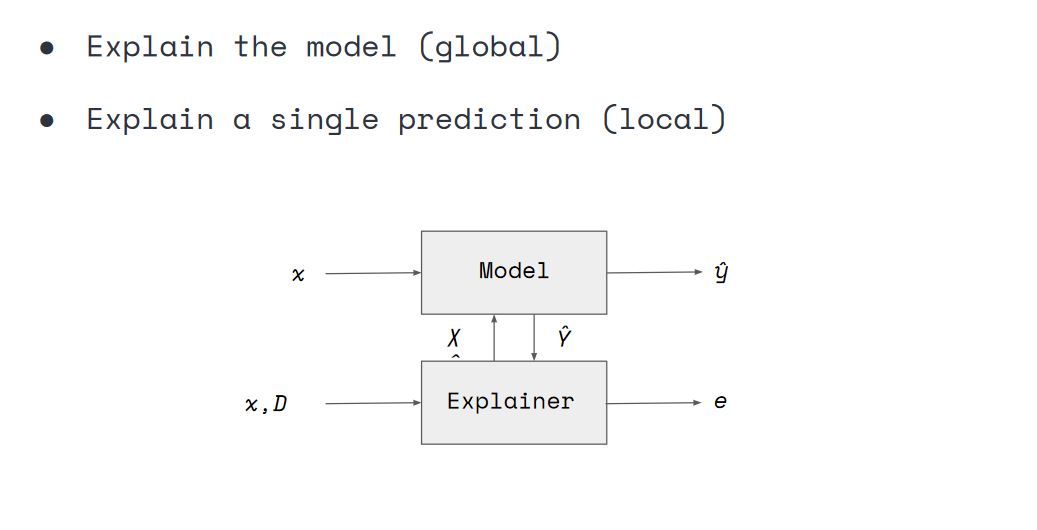
Let's first train our model with the new, more reasonable dataset¶
In [173]:
# Let's start by building our model with our newly balanced dataset
model = build_model(X)
model.fit(f_in(X_train), y_train, epochs=20, batch_size=512, shuffle=True, validation_data=(f_in(X_valid), y_valid), callbacks=[PlotLossesKeras()], verbose=0, validation_split=0.05,)
probabilities = model.predict(f_in(X_valid))
pred = f_out(probabilities)
Log-loss (cost function): training (min: 0.311, max: 0.587, cur: 0.311) validation (min: 0.312, max: 0.476, cur: 0.312) Accuracy: training (min: 0.735, max: 0.857, cur: 0.855) validation (min: 0.794, max: 0.857, cur: 0.857)
We can now use the Tabular Anchor technique in Alibi¶
In [174]:
from alibi.explainers import AnchorTabular
explainer = AnchorTabular(
loan_model_alibi.predict,
feature_names_alibi,
categorical_names=category_map_alibi)
explainer.fit(
X_train_alibi,
disc_perc=[25, 50, 75])
print("Explainer built")
Explainer built
In [175]:
X_test_alibi[:1]
Out[175]:
array([[52, 4, 0, 2, 8, 4, 2, 0, 0, 0, 60, 9]])
In [176]:
explanation = explainer.explain(X_test_alibi[:1], threshold=0.95)
print('Anchor: %s' % (' AND '.join(explanation['names'])))
print('Precision: %.2f' % explanation['precision'])
print('Coverage: %.2f' % explanation['coverage'])
Anchor: Marital Status = Separated AND Sex = Female Precision: 0.97 Coverage: 0.11
In [177]:
cnn = load_model('mnist_cnn.h5')
cf_X = cf_x_test[0].reshape((1,) + cf_x_test[0].shape)
plt.imshow(cf_X.reshape(28, 28));
In [178]:
shape = (1,) + cf_x_train.shape[1:]
target_class = 9 # any class other than 7 will do
cf = CounterFactual(cnn, shape=shape, target_class=target_class, target_proba=1.0, max_iter=20)
explanation = cf.explain(cf_X)
print(f"Counterfactual prediction: {explanation['cf']['class']} with probability {explanation['cf']['proba'][0]}")
plt.imshow(explanation['cf']['X'].reshape(28, 28));
Counterfactual prediction: 9 with probability [2.8820663e-12 3.0502541e-11 5.0862967e-09 2.1951721e-06 3.9167953e-05 7.8527846e-06 2.6525455e-14 9.4558978e-05 7.3595431e-05 9.9978262e-01]
In [179]:
show_iterations(explanation)
Intersection with Adversarial Robustness¶
- Black box explainability techniques allow us to understand black boxes
- But also provide tools that could be used maliciously
- Extra considerations need to be taken into account (i.e. when is a model "being explained")
- Limited access to explainability (auditors, domain experts, etc)
1.5 Shoutout to other tools and techniques¶
Seldon Core - Production ML in K8s¶
A language agnostic ML serving & monitoring framework in Kubernetes¶
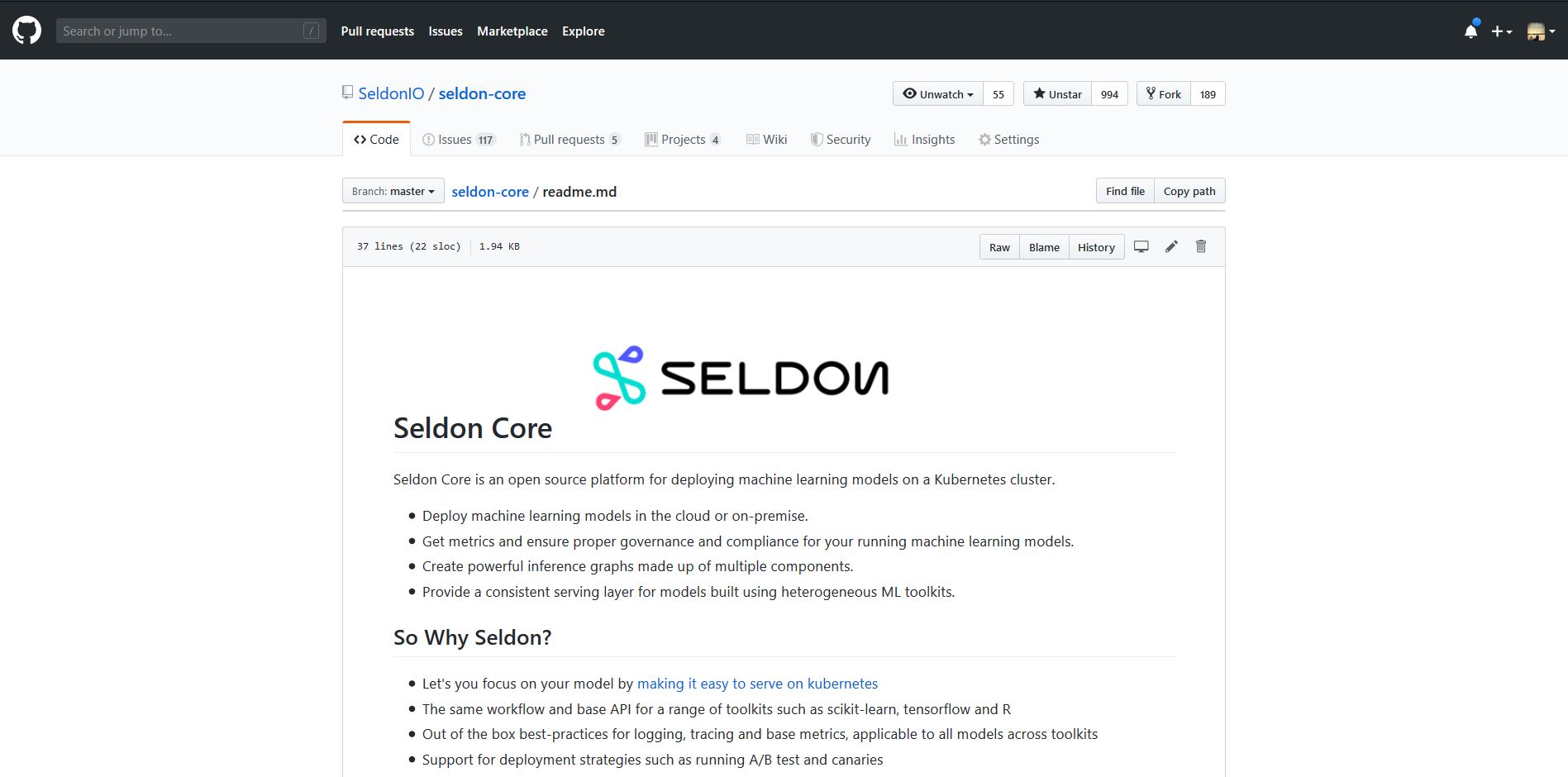
https://github.com/SeldonIO/seldon-core¶
In [180]:
print(f"Input: {X_test_alibi[:1]}")
print(f"Predicted class: {randomforest.predict(preprocessor.transform(X_test_alibi[:1]))}")
print(f"Probabilities: {randomforest.predict_proba(preprocessor.transform(X_test_alibi[:1]))}")
Input: [[52 4 0 2 8 4 2 0 0 0 60 9]] Predicted class: [0] Probabilities: [[0.86 0.14]]
Save the model artefacts so we can deploy them¶
In [ ]:
import dill
with open("pipeline/pipeline_steps/loanclassifier/preprocessor.dill", "wb") as prep_f:
dill.dump(preprocessor, prep_f)
with open("pipeline/pipeline_steps/loanclassifier/model.dill", "wb") as model_f:
dill.dump(randomforest, model_f)
Build a Model wrapper that uses the trained models through a predict function¶
In [ ]:
%%writefile pipeline/pipeline_steps/loanclassifier/Model.py
import dill
class Model:
def __init__(self, *args, **kwargs):
with open("preprocessor.dill", "rb") as prep_f:
self.preprocessor = dill.load(prep_f)
with open("model.dill", "rb") as model_f:
self.clf = dill.load(model_f)
def predict(self, X, feature_names=[]):
X_prep = self.preprocessor.transform(X)
proba = self.clf.predict_proba(X_prep)
return proba
Add the dependencies for the wrapper to work¶
In [181]:
%%writefile pipeline/pipeline_steps/loanclassifier/requirements.txt
dill==0.2.9
scikit-image==0.15.0
scikit-learn==0.20.1
scipy==1.1.0
numpy==1.17.1
Overwriting pipeline/pipeline_steps/loanclassifier/requirements.txt
Use the source2image command to containerize code¶
In [ ]:
!s2i build pipeline/pipeline_steps/loanclassifier seldonio/seldon-core-s2i-python3:0.11 loanclassifier:0.1
Define the graph of your pipeline with individual models¶
In [ ]:
%%writefile pipeline/pipeline_steps/loanclassifier/loanclassifiermodel.yaml
apiVersion: machinelearning.seldon.io/v1alpha2
kind: SeldonDeployment
metadata:
labels:
app: seldon
name: loanclassifier
spec:
name: loanclassifier
predictors:
- componentSpecs:
- spec:
containers:
- image: loanclassifier:0.1
name: model
graph:
children: []
name: model
type: MODEL
endpoint:
type: REST
name: loanclassifier
replicas: 1
Deploy your model!¶
In [182]:
!kubectl apply -f pipeline/pipeline_steps/loanclassifier/loanclassifiermodel.yaml
seldondeployment.machinelearning.seldon.io/loanclassifier configured
We can now send a request through HTTP¶
In [183]:
batch = X_test_alibi[:1]
print(batch)
[[52 4 0 2 8 4 2 0 0 0 60 9]]
In [184]:
from seldon_core.seldon_client import SeldonClient
sc = SeldonClient(
gateway="ambassador",
gateway_endpoint="localhost:80",
deployment_name="loanclassifier",
payload_type="ndarray",
namespace="default",
transport="rest")
client_prediction = sc.predict(data=batch)
print(client_prediction.response.data.ndarray)
values {
list_value {
values {
number_value: 0.86
}
values {
number_value: 0.14
}
}
}
Now we can send data through the REST API¶
In [185]:
%%bash
curl -X POST -H 'Content-Type: application/json' \
-d "{'data': {'names': ['text'], 'ndarray': [[52, 4, 0, 2, 8, 4, 2, 0, 0, 0, 60, 9]]}}" \
"http://localhost:80/seldon/default/loanclassifier/api/v0.1/predictions"
{
"meta": {
"puid": "9naau11chptmvhgjapkng6a13r",
"tags": {
},
"routing": {
},
"requestPath": {
"model": "loanclassifier:0.1"
},
"metrics": []
},
"data": {
"names": ["t:0", "t:1"],
"ndarray": [[0.86, 0.14]]
}
}
% Total % Received % Xferd Average Speed Time Time Time Current
Dload Upload Total Spent Left Speed
100 356 100 264 100 92 13200 4600 --:--:-- --:--:-- --:--:-- 18736
Now we can create an explainer for our model¶
In [186]:
from alibi.explainers import AnchorTabular
predict_fn = lambda x: randomforest.predict(preprocessor.transform(x))
explainer = AnchorTabular(predict_fn, alibi_feature_names, categorical_names=alibi_category_map)
explainer.fit(X_train_alibi, disc_perc=[25, 50, 75])
explanation = explainer.explain(X_test_alibi[0], threshold=0.95)
print('Anchor: %s' % (' AND '.join(explanation['names'])))
print('Precision: %.2f' % explanation['precision'])
print('Coverage: %.2f' % explanation['coverage'])
Anchor: Marital Status = Separated AND Sex = Female AND Relationship = Unmarried Precision: 0.99 Coverage: 0.05
But now we can use the remote model we have in production¶
In [ ]:
def predict_remote_fn(X):
from seldon_core.seldon_client import SeldonClient
from seldon_core.utils import get_data_from_proto
kwargs = {
"gateway": "ambassador",
"deployment_name": "loanclassifier",
"payload_type": "ndarray",
"namespace": "default",
"transport": "rest"
}
try:
kwargs["gateway_endpoint"] = "localhost:80"
sc = SeldonClient(**kwargs)
prediction = sc.predict(data=X)
except:
# If we are inside the container, we need to reach the ambassador service directly
kwargs["gateway_endpoint"] = "ambassador:80"
sc = SeldonClient(**kwargs)
prediction = sc.predict(data=X)
y = get_data_from_proto(prediction.response)
return y
And train our explainer to use the remote function¶
In [187]:
from seldon_core.utils import get_data_from_proto
explainer = AnchorTabular(predict_remote_fn, alibi_feature_names, categorical_names=alibi_category_map)
explainer.fit(X_train_alibi, disc_perc=[25, 50, 75])
explanation = explainer.explain(batch, threshold=0.95)
print('Anchor: %s' % (' AND '.join(explanation['names'])))
print('Precision: %.2f' % explanation['precision'])
print('Coverage: %.2f' % explanation['coverage'])
Anchor: Marital Status = Separated AND Sex = Female Precision: 0.98 Coverage: 0.11
To containerise our explainer, save the trained binary¶
In [ ]:
import dill
with open("pipeline/pipeline_steps/loanclassifier-explainer/explainer.dill", "wb") as x_f:
dill.dump(explainer, x_f)
Expose it through a wrapper¶
In [ ]:
%%writefile pipeline/pipeline_steps/loanclassifier-explainer/Explainer.py
import dill
import json
import numpy as np
class Explainer:
def __init__(self, *args, **kwargs):
with open("explainer.dill", "rb") as x_f:
self.explainer = dill.load(x_f)
def predict(self, X, feature_names=[]):
print("Received: " + str(X))
explanation = self.explainer.explain(X)
print("Predicted: " + str(explanation))
return json.dumps(explanation, cls=NumpyEncoder)
class NumpyEncoder(json.JSONEncoder):
def default(self, obj):
if isinstance(obj, (
np.int_, np.intc, np.intp, np.int8, np.int16, np.int32, np.int64, np.uint8, np.uint16, np.uint32, np.uint64)):
return int(obj)
elif isinstance(obj, (np.float_, np.float16, np.float32, np.float64)):
return float(obj)
elif isinstance(obj, (np.ndarray,)):
return obj.tolist()
return json.JSONEncoder.default(self, obj)
Build the container for the explainer¶
In [ ]:
!s2i build pipeline/pipeline_steps/loanclassifier-explainer seldonio/seldon-core-s2i-python3:0.11 loanclassifier-explainer:0.1
Add config files to build image with script¶
In [ ]:
%%writefile pipeline/pipeline_steps/loanclassifier-explainer/loanclassifiermodel-explainer.yaml
apiVersion: machinelearning.seldon.io/v1alpha2
kind: SeldonDeployment
metadata:
labels:
app: seldon
name: loanclassifier-explainer
spec:
name: loanclassifier-explainer
annotations:
seldon.io/rest-read-timeout: "100000"
seldon.io/rest-connection-timeout: "100000"
seldon.io/grpc-read-timeout: "100000"
predictors:
- componentSpecs:
- spec:
containers:
- image: loanclassifier-explainer:0.1
name: model-explainer
graph:
children: []
name: model-explainer
type: MODEL
endpoint:
type: REST
name: loanclassifier-explainer
replicas: 1
Deploy your remote explainer¶
In [188]:
!kubectl apply -f pipeline/pipeline_steps/loanclassifier-explainer/loanclassifiermodel-explainer.yaml
seldondeployment.machinelearning.seldon.io/loanclassifier-explainer configured
Now we can request explanations throught the REST API¶
In [190]:
from seldon_core.seldon_client import SeldonClient
import json
batch = X_test_alibi[:1]
print(batch)
sc = SeldonClient(
gateway="ambassador",
gateway_endpoint="localhost:80",
deployment_name="loanclassifier-explainer",
payload_type="ndarray",
namespace="default",
transport="rest")
client_prediction = json.loads(sc.predict(data=batch).response.strData)
print(client_prediction["names"])
[[52 4 0 2 8 4 2 0 0 0 60 9]] ['Marital Status = Separated', 'Sex = Female']
In [191]:
%%bash
curl -X POST -H 'Content-Type: application/json' \
-d "{'data': {'names': ['text'], 'ndarray': [[52, 4, 0, 2, 8, 4, 2, 0, 0, 0, 60, 9]] }}" \
http://localhost:80/seldon/default/loanclassifier-explainer/api/v0.1/predictions
{
"meta": {
"puid": "5q5bavp0qo1qg247lcml9864vl",
"tags": {
},
"routing": {
},
"requestPath": {
"model-explainer": "loanclassifier-explainer:0.1"
},
"metrics": []
},
"strData": "{\"names\": [\"Marital Status = Separated\", \"Sex = Female\", \"Education = Associates\"], \"precision\": 0.9739130434782609, \"coverage\": 0.0096, \"raw\": {\"feature\": [3, 7, 2], \"mean\": [0.8801571709233792, 0.9497206703910615, 0.9739130434782609], \"precision\": [0.8801571709233792, 0.9497206703910615, 0.9739130434782609], \"coverage\": [0.1782, 0.1029, 0.0096], \"examples\": [{\"covered\": [[41, 4, 1, 2, 2, 0, 4, 1, 0, 0, 40, 0], [23, 4, 4, 2, 7, 3, 4, 0, 0, 0, 20, 9], [33, 4, 0, 2, 1, 1, 4, 0, 0, 0, 40, 9], [50, 4, 4, 2, 2, 0, 4, 1, 4386, 0, 40, 0], [22, 4, 0, 2, 2, 1, 4, 1, 0, 0, 45, 9], [30, 4, 4, 2, 5, 4, 4, 0, 0, 0, 40, 9], [21, 4, 4, 2, 2, 3, 4, 1, 0, 0, 36, 9], [35, 4, 4, 2, 7, 1, 4, 0, 0, 0, 35, 9], [35, 4, 4, 2, 2, 0, 4, 1, 0, 0, 46, 9], [46, 4, 6, 2, 5, 0, 4, 1, 0, 0, 40, 9]], \"covered_true\": [[40, 4, 3, 2, 2, 0, 4, 1, 0, 0, 55, 9], [30, 4, 4, 2, 5, 4, 4, 0, 0, 0, 40, 9], [33, 4, 1, 2, 5, 1, 4, 1, 0, 0, 40, 1], [28, 4, 4, 2, 2, 0, 4, 1, 0, 0, 40, 9], [28, 4, 1, 2, 1, 1, 4, 1, 0, 0, 21, 9], [25, 0, 4, 2, 0, 3, 2, 1, 0, 0, 40, 0], [31, 4, 3, 2, 2, 0, 4, 1, 0, 0, 40, 9], [31, 0, 3, 2, 0, 1, 4, 0, 0, 0, 25, 9], [43, 4, 4, 2, 2, 0, 4, 1, 0, 0, 40, 9], [50, 4, 4, 2, 4, 0, 4, 1, 0, 0, 38, 9]], \"covered_false\": [[36, 4, 4, 2, 5, 3, 4, 0, 0, 0, 40, 9], [32, 4, 1, 2, 8, 0, 4, 1, 0, 0, 45, 9], [49, 4, 1, 2, 8, 1, 2, 0, 27828, 0, 60, 9], [31, 4, 1, 2, 5, 5, 4, 0, 7688, 0, 43, 9], [52, 4, 5, 2, 5, 0, 4, 1, 0, 0, 50, 9], [31, 4, 2, 2, 5, 0, 4, 1, 0, 1977, 99, 9], [50, 4, 5, 2, 5, 0, 4, 1, 0, 1977, 40, 9], [42, 5, 5, 2, 8, 0, 4, 1, 0, 0, 40, 9], [37, 4, 1, 2, 8, 0, 4, 1, 5178, 0, 40, 9], [57, 2, 5, 2, 8, 0, 4, 1, 0, 0, 50, 9]], \"uncovered_true\": [], \"uncovered_false\": []}, {\"covered\": [[29, 4, 1, 2, 1, 1, 4, 0, 0, 0, 35, 9], [50, 4, 1, 2, 1, 5, 4, 0, 0, 0, 40, 9], [19, 0, 3, 2, 0, 4, 4, 0, 0, 0, 30, 9], [22, 4, 4, 2, 1, 3, 4, 0, 0, 0, 40, 9], [37, 4, 0, 2, 8, 1, 4, 0, 0, 0, 40, 9], [38, 4, 4, 2, 2, 3, 4, 0, 0, 0, 25, 9], [59, 4, 1, 2, 1, 5, 4, 0, 2885, 0, 30, 9], [23, 4, 1, 2, 6, 1, 4, 0, 0, 0, 45, 9], [31, 4, 0, 2, 6, 3, 4, 0, 0, 0, 38, 9], [50, 4, 4, 2, 1, 2, 1, 0, 0, 0, 40, 7]], \"covered_true\": [[21, 4, 4, 2, 7, 3, 4, 0, 0, 0, 35, 9], [25, 0, 4, 2, 0, 4, 4, 0, 0, 0, 50, 9], [56, 4, 3, 2, 7, 4, 2, 0, 0, 0, 45, 9], [40, 0, 4, 2, 0, 5, 2, 0, 3464, 0, 20, 9], [52, 4, 4, 2, 6, 5, 4, 0, 0, 0, 52, 1], [25, 4, 4, 2, 4, 1, 3, 0, 0, 0, 40, 9], [21, 4, 4, 2, 6, 4, 0, 0, 0, 0, 38, 9], [21, 4, 4, 2, 6, 3, 4, 0, 0, 0, 20, 9], [26, 4, 4, 2, 1, 1, 4, 0, 0, 0, 40, 9], [25, 4, 0, 2, 5, 5, 4, 0, 0, 1887, 40, 9]], \"covered_false\": [[56, 6, 4, 2, 1, 4, 4, 0, 99999, 0, 40, 9], [33, 2, 1, 2, 5, 1, 4, 0, 0, 0, 50, 9], [63, 4, 1, 2, 5, 5, 4, 0, 7688, 0, 36, 9], [67, 4, 4, 2, 1, 1, 4, 0, 15831, 0, 16, 3], [43, 4, 5, 2, 5, 4, 4, 0, 0, 2547, 40, 9], [49, 4, 1, 2, 8, 1, 2, 0, 27828, 0, 60, 9], [62, 4, 4, 2, 2, 1, 4, 0, 8614, 0, 39, 9], [31, 4, 1, 2, 5, 5, 4, 0, 7688, 0, 43, 9], [36, 4, 4, 2, 5, 3, 4, 0, 0, 0, 40, 9], [53, 4, 2, 2, 5, 5, 4, 0, 99999, 0, 37, 9]], \"uncovered_true\": [], \"uncovered_false\": []}, {\"covered\": [[23, 7, 0, 2, 8, 1, 4, 0, 0, 0, 40, 9], [40, 4, 0, 2, 7, 5, 4, 0, 0, 0, 35, 9], [57, 4, 0, 2, 7, 4, 4, 0, 0, 0, 40, 9], [39, 4, 0, 2, 7, 0, 1, 0, 0, 0, 40, 7], [72, 4, 0, 2, 7, 4, 4, 0, 0, 0, 16, 9], [43, 4, 0, 2, 5, 0, 4, 0, 0, 0, 40, 9], [33, 4, 0, 2, 2, 4, 0, 0, 0, 0, 40, 9], [23, 4, 0, 2, 2, 4, 4, 0, 0, 0, 50, 9], [53, 6, 0, 2, 6, 0, 4, 0, 0, 0, 40, 1], [42, 4, 0, 2, 5, 4, 4, 0, 0, 0, 40, 9]], \"covered_true\": [[37, 4, 0, 2, 8, 0, 4, 0, 0, 1977, 60, 9], [18, 4, 0, 2, 6, 3, 4, 0, 0, 0, 25, 9], [47, 6, 0, 2, 8, 0, 4, 0, 0, 2415, 50, 9], [48, 7, 0, 2, 1, 0, 4, 0, 0, 0, 35, 9], [19, 4, 0, 2, 1, 3, 2, 0, 0, 0, 40, 9], [34, 4, 0, 2, 5, 0, 4, 0, 0, 0, 40, 6], [59, 4, 0, 2, 5, 4, 4, 0, 0, 0, 50, 9], [30, 4, 0, 2, 1, 4, 4, 0, 0, 0, 24, 9], [28, 2, 0, 2, 5, 1, 4, 0, 0, 0, 40, 9], [34, 4, 0, 2, 2, 0, 4, 0, 0, 0, 40, 3]], \"covered_false\": [[39, 4, 0, 2, 5, 5, 4, 0, 7688, 0, 20, 9], [40, 4, 0, 2, 8, 0, 4, 0, 0, 2415, 45, 9], [38, 4, 0, 2, 5, 0, 4, 0, 99999, 0, 65, 9], [70, 5, 0, 2, 8, 0, 4, 0, 0, 2377, 50, 9], [46, 4, 0, 2, 6, 0, 4, 0, 15024, 0, 40, 9], [42, 4, 0, 2, 6, 0, 4, 0, 7298, 0, 40, 9]], \"uncovered_true\": [], \"uncovered_false\": []}], \"all_precision\": 0, \"num_preds\": 1000101, \"names\": [\"Marital Status = Separated\", \"Sex = Female\", \"Education = Associates\"], \"instance\": [[52.0, 4.0, 0.0, 2.0, 8.0, 4.0, 2.0, 0.0, 0.0, 0.0, 60.0, 9.0]], \"prediction\": 0}}"
}
% Total % Received % Xferd Average Speed Time Time Time Current
Dload Upload Total Spent Left Speed
100 4784 100 4692 100 92 2329 45 0:00:02 0:00:02 --:--:-- 2375
Now we have an explainer deployed!¶
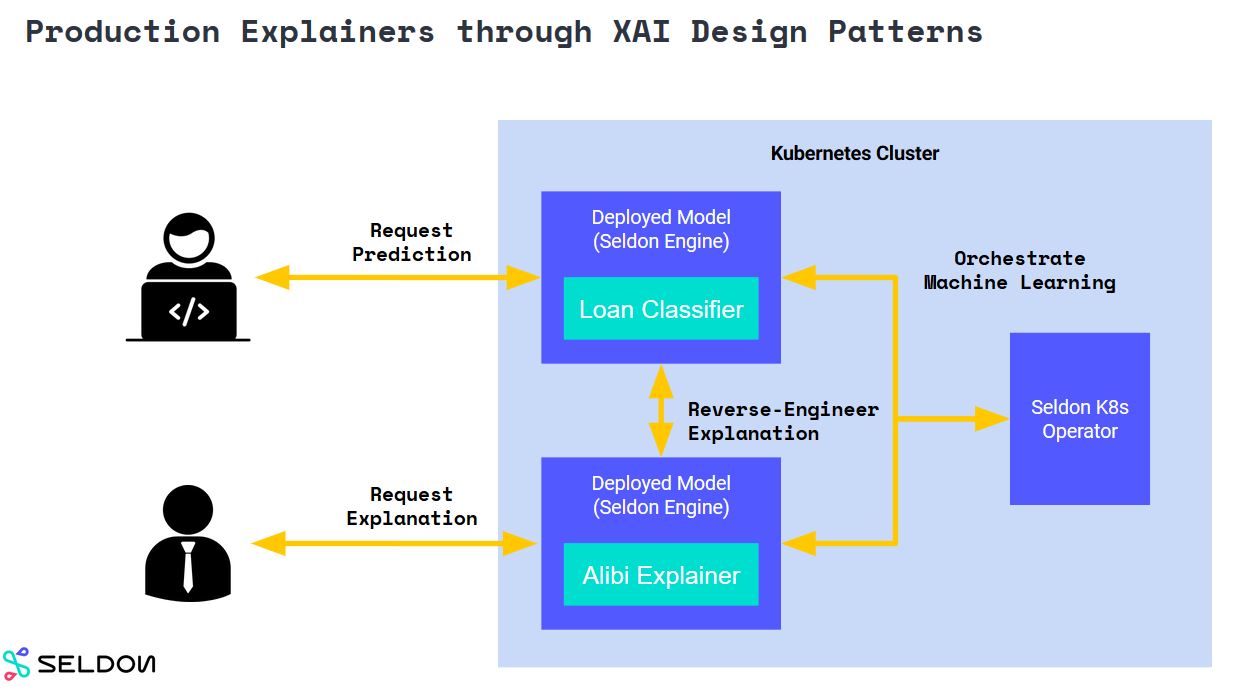
Visualise metrics and explanations¶
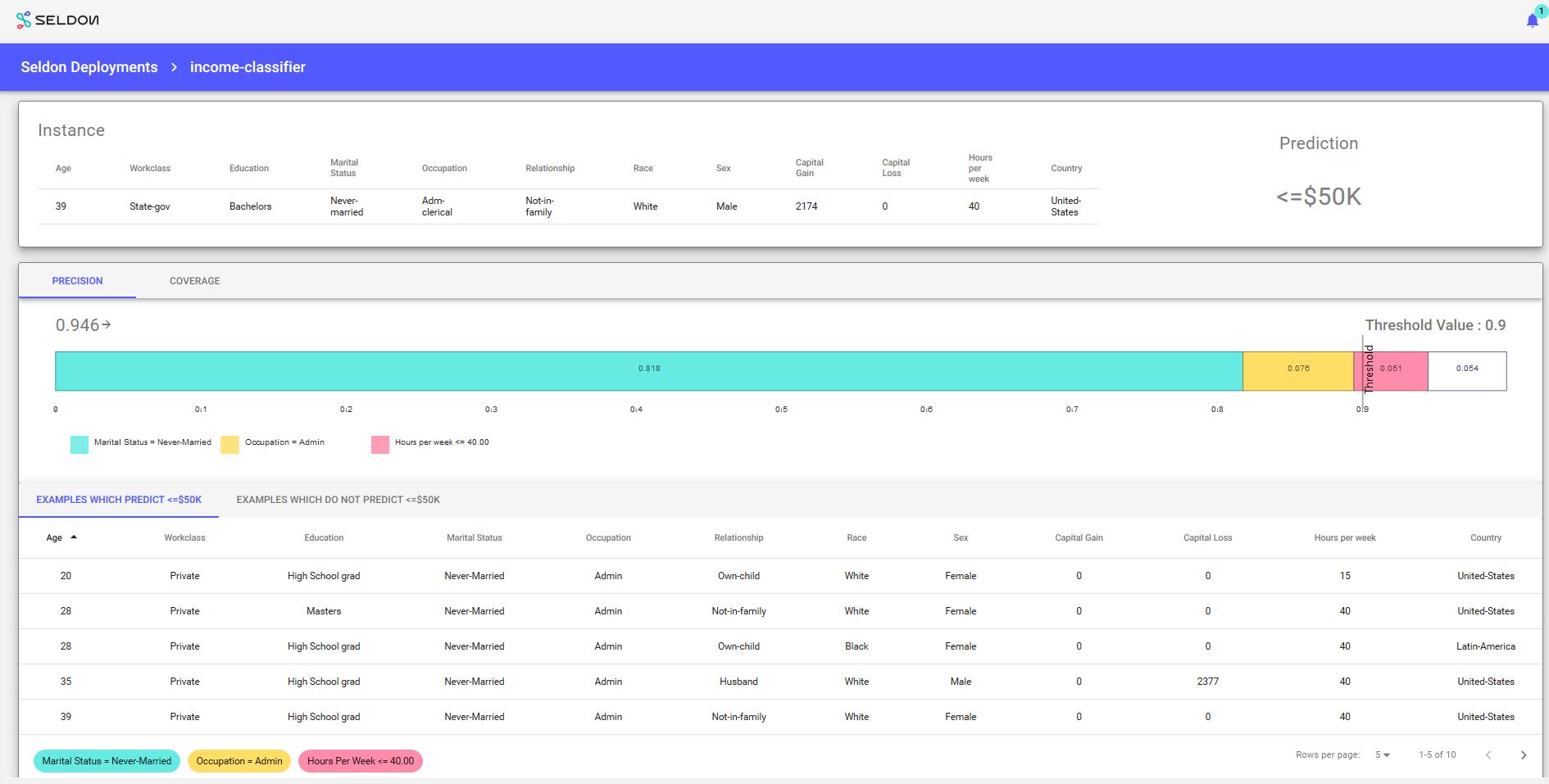
Revisiting our workflow¶

